The main purpose of a motor is to convert electrical energy into mechanical energy. But when the motor’s synchronous speed is less than the rotor speed, the motor acts like a generator and converts mechanical energy into electrical energy. This energy is typically fed back into capacitors in the DC bus, but the bus can only handle a limited amount of voltage before the drive registers a bus overvoltage fault. Regeneration gives this energy somewhere to go.
The term “regeneration” was introduced into the general lexicon several decades ago with the mass production of hybrid electric vehicles (HEVs). In HEVs, energy generated during braking (regenerative energy) is used to charge the batteries.
One motor, four operating modes
Regenerative drives allow motors to produce positive torque or negative torque, in either forward or reverse rotation. This is referred to as “four-quadrant” operation and is depicted in the graphic below. Regeneration takes place in quadrants II and IV, where the direction of the torque opposes the direction of motor rotation (clockwise rotation with counterclockwise torque, or counterclockwise rotation with clockwise torque).
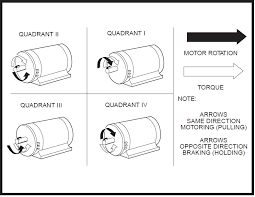
Image credit: Quantum Controls
When the motor operates in one of these two modes, a regenerative drive can take the electrical energy generated by the motor and feed it back to the AC power source or to a common bus that supplies two or more drives. A common bus provides additional energy savings in that the power is only converted from AC to DC one time. When it is regenerated to the bus and passed to another inverter, it doesn’t have to be converted. In either case—whether it is fed back to the source or to a common bus—the generated energy is used again, rather than being completely lost to heat, as is the case with a traditional dynamic brake.
One key component that enables regeneration in AC drives is the insulated-gate bipolar transistor (IGBT). Traditional diodes used in the inverter bridge can only handle power in one direction (incoming to the motor) and aren’t able to transfer power back to the AC source. Including IGBTs in the bridge allows power to flow in both directions.
Regenerative applications
Applications that involve frequent starts and stops, constant deceleration, or overhauling loads are good candidates for the use of regenerative drives. Examples include downhill conveyors (constant deceleration), elevators, and flywheels. But in reality, most applications regenerate power during some phases of their operation.
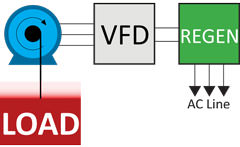
Image credit: Bonitron
“Overhauling” means that the load is moving faster than the designated motor speed.
Despite the energy and cost savings of regenerative drives, their capital cost is relatively high when compared to simple dynamic braking systems. Therefore, cost-justification for regeneration is strongest when the amount of energy to be recovered is large, or when the cost of the recovered energy is high.


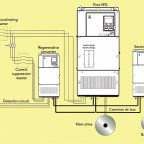
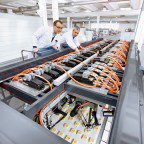
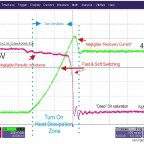

Leave a Reply
You must be logged in to post a comment.